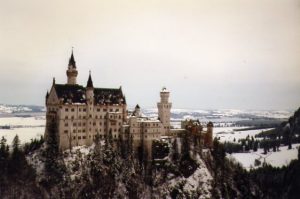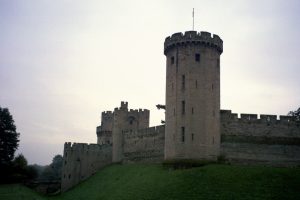fantasy
What Era?
A couple of weeks ago, I was having a very lazy Sunday and spent the afternoon lying on the sofa, watching history videos on YouTube. One came up that was about how most “medieval” fantasy is actually more based on the Stuart era, so 1600s through early 1700s. Of course, anything that combines history and fantasy is right down my alley, so I watched it, and I think he had some interesting points.
One thing he pointed out was that the kind of inn/tavern that’s common in fantasy fiction and in things like Dungeons and Dragons, like the Prancing Pony in The Lord of the Rings, is more of an 18th century coaching in than an actual medieval inn. The roasted potatoes or potato-laden stew they get in inns would be from the 1600s or later, since potatoes weren’t grown in Europe until then.
Then there’s clothing. The aesthetic of most fantasy clothing is more 16th century than medieval. Take the female Renaissance festival uniform of blouse, lace-up bodice, and skirt, which you also see in Disney fairy tale depictions and lots of fantasy art. That’s mid-1600s, not medieval. In the medieval era, women were more likely to wear one-piece dresses. Men’s fantasy clothing also dates later. The Hobbit outfits with their frock coats and waistcoats are late 1600s and beyond — and it’s not just the costuming for the films. That’s what Tolkien described in the books. The tall boots with cuffed tops that we see in so much fantasy art are from the 1600s. About the only truly medieval look we see in fantasy is the long tunic with a sword belt.


The Gothic style of architecture, with its spires and graceful pointed arches, was only used for churches during the medieval period. Castles built then were fortresses. They needed to be something that could keep the enemy out. The imagery of Gothic-style castles, so common in fantasy art, comes from the Victorian Gothic Revival. Neuschwanstein, the castle that inspired the Disneyland castle (and so many fantasy castles), was built in the late 1800s.
It didn’t come up in the video, but I’ll add that the roaring fire in the massive fireplace is also post-medieval. In the medieval era, they were more likely to have an open hearth in the middle of the floor. Existing medieval buildings have often been retrofitted to add fireplaces and chimneys. It’s like the way my current home has central air conditioning and fiber Internet, but that doesn’t mean it had those things when it was built in 1924.
In general, the “medieval” fantasy aesthetic is based on the 1600s, but without gunpowder. It is possible that some authors really did mean for things to be properly medieval, but the cover artists went with more common fantasy imagery and the authors were tearing their hair out over the inaccuracy. For instance, I know that Katherine Kurtz was very particular about being as close as possible to historical accuracy for her Deryni series, with one part of the timeline set in the 10th century and another part in the 12th century, and she describes the clothing based on that, but on the book covers, the men are wearing those tall cuffed boots.
I found all this interesting because I’d decided to mentally set a world I’ve been building in the 1640s for the aesthetic and technology (minus gunpowder), mostly because the clothes are closest to fitting that fairytale look I had in mind. I guess even without consciously being aware of it, my “medieval” fantasy was being more Stuart.
My Rydding Village world is a mix of things. I think we’re at close to a 1600s level of technology, though in rural areas things don’t change all that much from the 1500s through the 1700s. We’re late enough to have fireplaces, but not quite to the point of having iron stoves. The 1600s and early 1700s buildings at the Museum of Frontier Culture are close to what I imagine. I keep picturing Elwyn in medieval style dresses, the kind that are close-fitting through the body and with full skirts, but Mair is usually wearing more the Renaissance festival type outfit in my head. But there’s also a lot of Regency-style culture going on in the upper classes. I think it’s just a general pre-industrial world with bits and pieces from a lot of eras rather than being based on any one particular time period.
